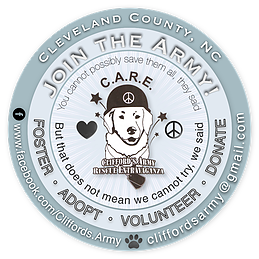
Many open intake shelters across the country have went to “managed intake”, The concept behind this is to control the number of animals and the time that they come into the shelter by determining the urgency of the animals being surrendered. As we all know, if a government shelter gets full, it normally results in animals being euthanized for space. In order to prevent this, interviews ( either on phone, on line and/or in person) take place to see when a space is available, why the animal is being surrendered, if there is any help available for the people surrendering to keep the animal longer ( this could be supplying food, vet care, etc), working toward keeping the animal safe and finding a new home for them.
When one first hears of this, it sounds great. Possibly vetting and food for an owner, and they may get to keep their beloved dog/cat. While this may work some of the time, it is not the norm for most of these animals.
Once a percentage was placed on live release rate to be considered “no kill”, some shelters began to play the numbers game instead of being concerned about the welfare of the animals. A shelter is considered no kill if the shelter has a 90 percent live release rate. If one controls the number of intakes, which animals they take in, then it suddenly becomes easier to achieve that goal. But here is the problem, what happens to those animals that are not taken in? Let’s take a closer look at this variable.
The 90 percent live release rate may sound impressive until you realize that it only pertains to the animals that are chosen to be admitted into the shelter and bears no relation to the number that actually need help. The many that are turned away and their deaths are not counted, nor the fact that those deaths may be by starvation, dehydration, predation, or other intense prolonged suffering. For a local rescue that is foster based to have more animals than the shelter, speaks volumes. Achieving 90 percent live release rate should not be more important than the animals themselves or their quality of life.
A desperate person goes to their local county or city run shelter. They cannot no longer keep their dog/cat for whatever reason, but they are immediately told the shelter will not take the animal. Another desperate person picks up dogs to keep them from getting run over in a busy road. They go to their local shelter, only to be told the shelter will not take them. The phone call that comes in with starving dogs out on their own, needing help, and the call is ignored because the dogs do not fit into the managed intake that day. The dog that has been abandoned, running loose in a neighborhood where residents are afraid they will get bit. What happens to these animals? Many times, they are released right down the road from the shelter, or dumped across state lines to fend for themselves. These animals and their needs should not be ignored.
The other part of the equation is adoption and/or rescue to move the animals out the front door so there is room for more to come in. Operating hours that allow working people to come to adopt, social media presence, friendly and helpful staff, on site and off site adoption events, partnerships with rescues, all of this is a huge part to get dogs out the door and allow space for others in need.
Do I think managed intake can work? If you just cut intake out all together to solve a full shelter, with no regard to the circumstances of each animal in need, then you are worried about numbers, not the welfare of the animals. You cannot ignore dogs who have been dumped out to fend for themselves, nor can you expect people to care for dogs that randomly show up in the areas where they live. If you manage intake, but continue to take in those that have no other solution, then yes, I think it can work.
At the end of the day, focus on the welfare of the animals, not how the shelter looks on piece of paper.
